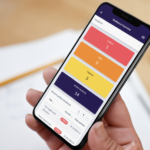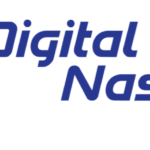By Cat Yong
There are many opinions about what a digital enterprise could be. And there could be hundreds of press roundtables trying to pin it down, but definitions would be loose, at best.
But, one fundamental thing is clear. The function of IT and tech in essence, is to automate and enable efficiency. And this was enough for businesses, over a decade ago.
These days, only efficiency won’t cut it anymore. Business outcomes have to change now. Which is the point of digitisation.
In any business, no matter what industry it is in, any product, solution, tool or service that endeavours to change business outcome, would have to do so via changing business processes.
But this is a gut-wrenching, hair-tearing and blood-vomiting task for organisations deeply entrenched in decades and millions of dollars’ worth of legacy systems and infrastructure.
Software AG proposes there is a more elegant way to do this.
But first things first.
One has to appreciate the way Software AG systematically and methodically approaches their customers’ whole process changing endeavour.
Not to mention the acquisition spree they embarked upon 6 years ago and which accelerated tremendously in the past 6 months to beef up offerings for their customers to do exactly just that: change processes elegantly.
During the first day keynote of their annual Innovation World conference, CEO Karl-Heinz Streibich summed up the 5 ways to “expedite you on the road to the digital enterprise and help top line growth.”
These 5 ways are IT portfolio management, collaboration and process analysis, integration and automation, human interface to data and information, and last but not least, In-Memory solutions.
These 5 unique ways make up the Software AG suite of solutions which form the abstraction layer over legacy and siloed IT systems.
What to avoid – the wrong architecture
When it comes to the architecture of IT systems, organisations are doing the same mistake all over again, according to Software AG CTO, Wolfram Jost.
The way IT systems were architected over 20 years ago, doesn’t allow for rapid process changes.
He explained, “These are functional-oriented systems like accounting, HR, sales, finance marketing, you name it. And they have hardwired processes, hardwired data logic.”
As a result there are still function-oriented siloes.
Jost pointed out, “Even in the cloud, we still have siloes! Functional-oriented systems are built for harmonisation and standardisation. They are not built for the speed of change. That was not the intention when these applications were built.”
A holistic architecture like the Software AG suite on top of the application layer, could serve as an abstraction layer to processes, according to Jost. He also opined, “This layer provides the ability to digitise processes and become a digital company. You can’t do this without such a layer”
In-memory, integration, business process management
While the Software AG suite serving as an abstraction layer is well and good, Software AG themselves also started work upon a new architecture, since some 6 years ago.
“We built on our own innovation and acquired innovation,” said Jost adding that their acquisitions so far have been according to their strategy for to help customers overcome legacy shortcomings.
Of significance is Terracotta, which forms their in-memory data management piece. Jost dubbed in-memory technology the new storage layer for data. Being much more accessible and cheaper now than over a decade ago, in-memory is forming the important foundation for a lot of big data and analytics solutions.
“It has much, much better performance and much, much better scalability,” said Jost.
Apama, which they acquired last June, supports the complex events processing (CEP) capabilities for their analytics layer, whilst Long Jump supports their application building capabilities on the integration layer, not to mention it also kickstarts Software AG’s platform-as-a-service (PaaS) ambitions, in Software AG Live.
Nirvana, which came with their Teracotta acquisition in 2011, forms their messaging backbone.
Jost added, “Alfabet is supporting their enterprise architecture capabilities in the area of portfolio management and IT planning.”
All that on the cloud and integrated
Software AG also used Innovation World 2013 as their platform to launch Process Live and Portfolio Live.
Process Live and Portfolios Live, make up two of the 4 components of Software AG’s unified PaaS,Software AG Live.
AgileApps Live and Integration Live are also offered as part of this unified PaaS. However, Integration Live is due for release next year.
Jost had emphasised, “What we have on premise, we also do on the cloud. Integration is our first priority.”
The latest version integration suite WebMethods 9.5, which was announced at same event, now also offers dynamic cloud scaling via Elastic Enterprise Service Bus (ESB) technology.




